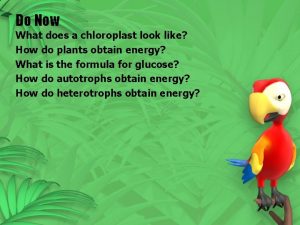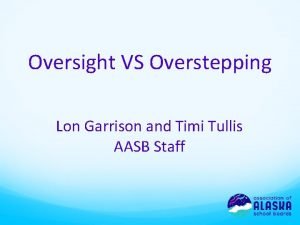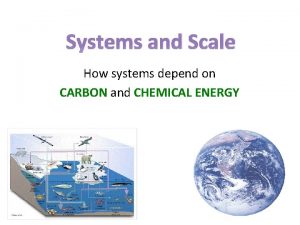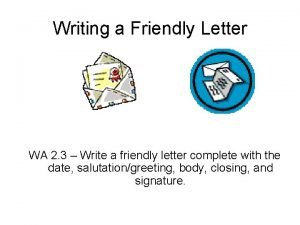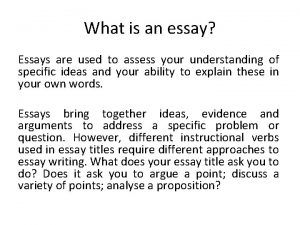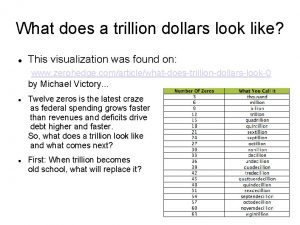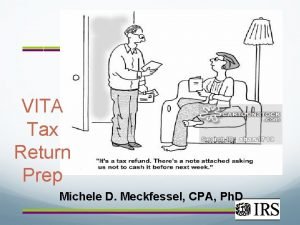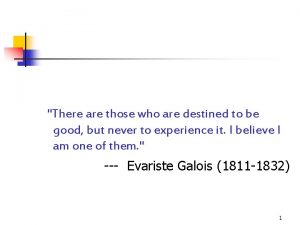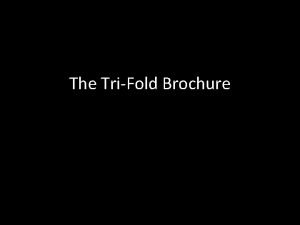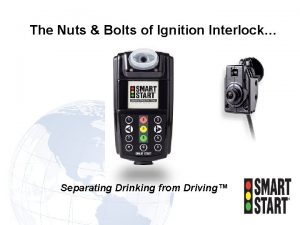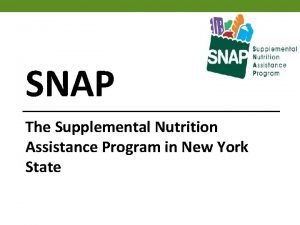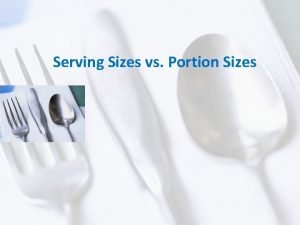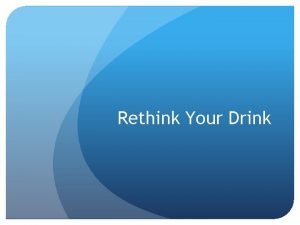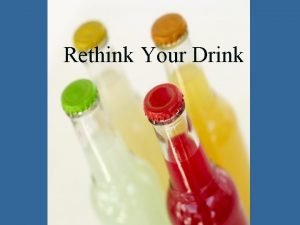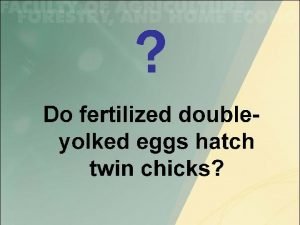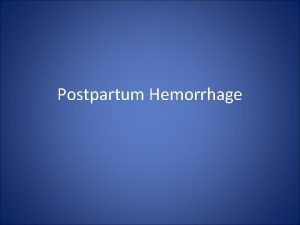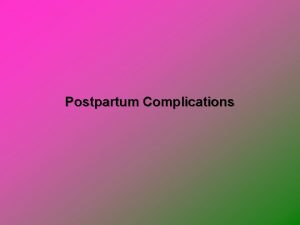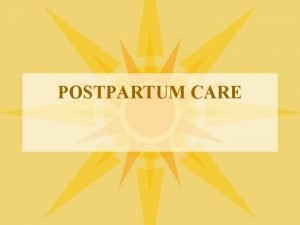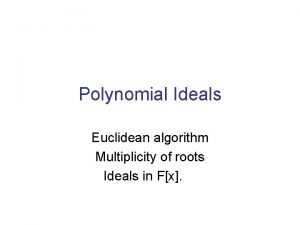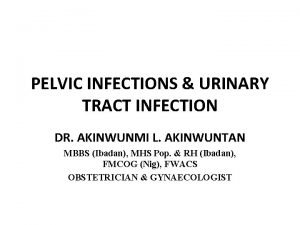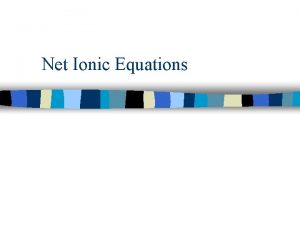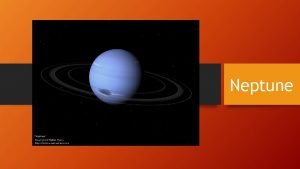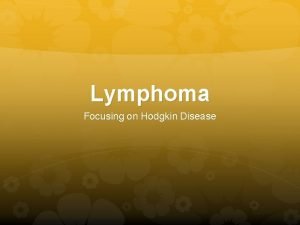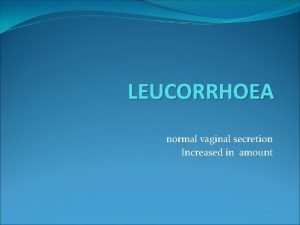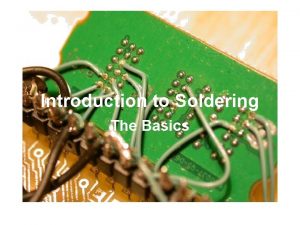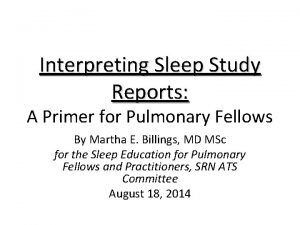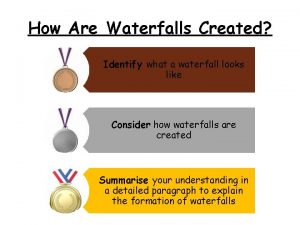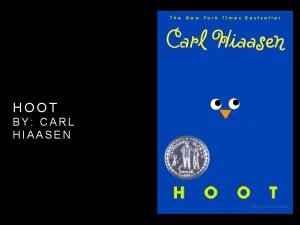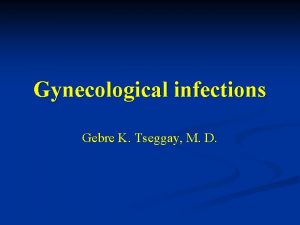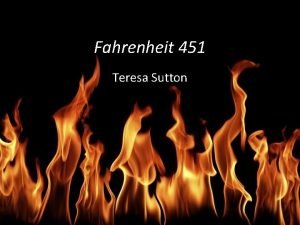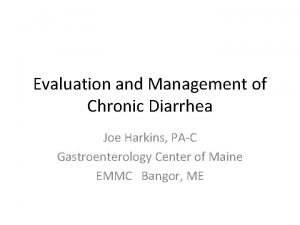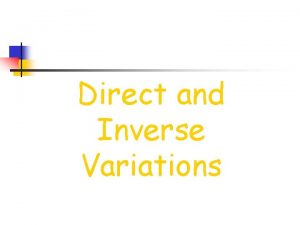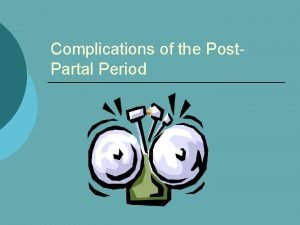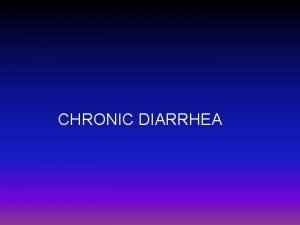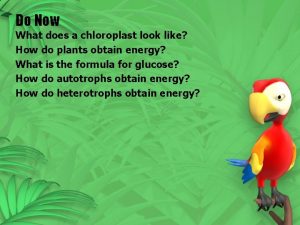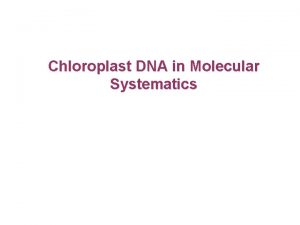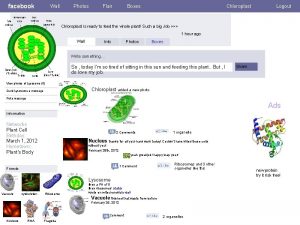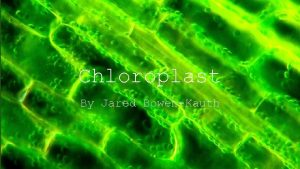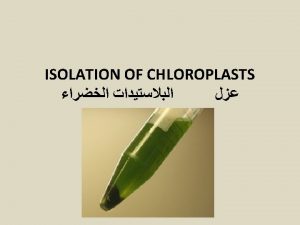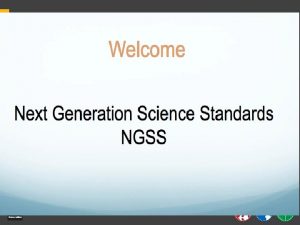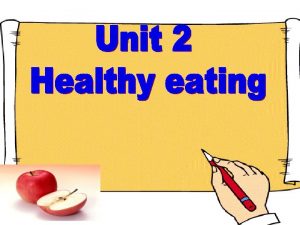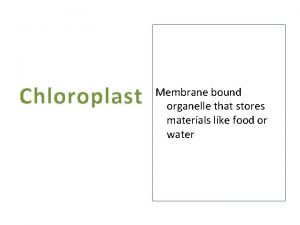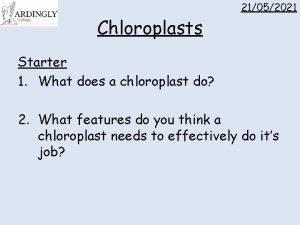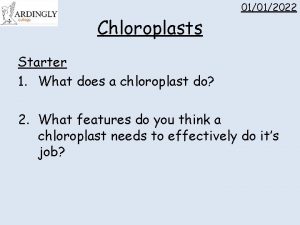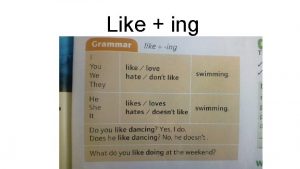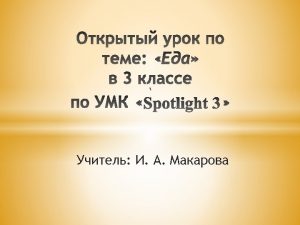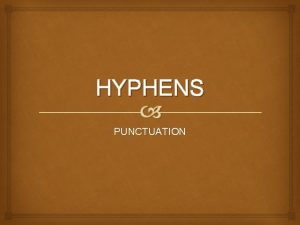Do Now What does a chloroplast look like



























































- Slides: 59

Do Now What does a chloroplast look like? How do plants obtain energy? What is the formula for glucose? How do autotrophs obtain energy? How do heterotrophs obtain energy?

Chapter 6 Photosynthesis: Capturing and Converting Energy

Energy – the ability to do work

Photosynthesis • Plants use the energy of sunlight to produce carbohydrates • Energy is now in the chemical bonds

Jan Van Helmont • Where does a tree’s increased mass come from? • Seedling – 5 years – soil same mass – tree gained 75 kg • Conclusion water “hydrate”

Priestly • Candle and a jar candle goes out – no oxygen • Candle + jar + plant candle does not go out

Ingenhousz Oxygen produced in light

Equation for Photosynthesis



Requirements for Photosynthesis

1. Sunlight • Autotrophs – can use sunlight to make food – Ex. Plants obtain energy • Heterotrophs – obtain energy by eating other organisms – Ex. Animals • All organisms on earth depend on the sun for energy

• Sunlight is “white” light • Many wavelengths of light • ROYGBIV – visible spectrum

2. Pigments • Colored substances that absorb or reflect light • Photosynthesis begins when light is absorbed by pigments • Chlorophyll – principle pigment of green plants • Absorbs red and blue and reflects green light

Chromatography Paper chromatography is a way to separate chemical components of a solution. How it Works 1. A drop of solution is placed at the bottom of a paper. 2. The paper is put in a solvent (tip only). 3. The solvent rises through the paper. 4. As it rises it carries the solution with it. 5. The parts of the solution move at different speeds depending on their mass. Lighter molecules move faster.

3. Energy Storing Compounds • • • Like solar cells Electrons are raised to higher energy levels – then trapped in bonds Two ways that energy from the sun is trapped in chemical bonds

1. High energy e- are passed to an electron carrier (NADP +) NADPH – Electron carrier – a molecule that can accept a pair of high energy electrons and later transfer them with most of their energy to another compound – Conversion of NADP+ to NADPH – one way that energy from the sun can be trapped in a chemical form

2. Second way light energy is trapped ATP (Adenosine Triphosphate) – 3 phosphates Fig 6 -6 Green plants produce ATP in photosynthesis ATP energy storage compound used by every cell

Producing ATP 1. AMP (mono) – one phosphate 2. AMP + P ADP (two – di) 3. ADP + P ATP • Energy is stored in the P bonds • Energy is released when P bonds are broken



Forming and Breaking Down ATP Adenosine P P P Adenosine triphosphate (ATP) P P Adenosine diphosphate (ADP) Adenosine P P

6 -2 Photosynthesis: The Light and Dark Reactions • Light Reaction – energy of sunlight captured to make energy storing compounds • ATP and NADPH • Short term energy storage

Sun Light-Dependent Reactions At each step along the transport chain, the electrons lose energy. Light energy transfers to chlorophyll. Chlorophyll passes energy down through the electron transport chain. Energized electrons provide energy that splits H 2 O H+ NADP+ bonds P to ADP forming oxygen ATP released NADPH for the use in light-independent reactions

• Dark Reaction – energy from ATP and NADPH to make glucose (100 x the energy) • Long term energy storage

The Light Reactions

Chloroplast Parts of a chloroplast Stroma – “cytoplasm” Grana – pancake Thylakoid – stacks of pancakes (grana) Thylakoid = photosynthetic membrane


4 Parts of the Light Reaction 1. 2. 3. 4. Light absorption Electron transport Oxygen production ATP formation

Photosystems • Clusters of pigment molecules that capture energy from the sun • Two in plants – Photosystems I and II

Photosynthesis – plants - autotrophs • Occurs in the chloroplast • Absorbs light • Light reaction occurs in the thylakoid (photosynthetic environment) – needs sun to occur

Light Absorption • Photosystem I & II – absorb sunlight • Pigment molecules pass the energy to other pigment molecules • Reach a special pair of chlorophyll molecules in the reaction center • High energy electrons released and passed to many electron carriers

Electron Transport • Electron transport – electron transport chain • e- passed from one carrier to another (bucket brigade) • Passed to electron carrier NADP+ • NADPH

Electron Transport Chain

NADPH – restoring electrons • Water is split (photolysis) • 2 H O 4 H+ + O + 4 e • Oxygen is released • 4 e- go to the chloroplast • 4 H+ are used to make ATP 2 2


ATP Formation • 4 H+ released inside the membrane • H+ build up • Inside positive – outside is negative (charge difference is a source of energy) • Enzymes use this energy to attach P to ADP ATP


The Dark Reaction or Calvin Cycle

The Dark Reaction or Calvin Cycle • Does not need sunlight to happen • Often happens with sunlight • Uses products of the light reaction (ATP + NADPH) • This series of reactions is particularly critical to living things • Carbon dioxide is used to build complex organic molecules glucose

Dark Reaction or Calvin Cycle Occurs in the stroma 5 C sugar (Ru. BP) + CO 2 This reaction is slow and is catalyzed by rubisco Next two 3 C sugars are produced (PGA) ATP and NADPH from the light reaction are used to convert PGA eventually into PGAL (3 C) – products P + ADP and NADP+ PGAL can use some ATP and become Ru. BP (5 C) After several turns of the cycle 2 PGAL can leave and form glucose



6 -3 Glycolysis and Respiration

• Enables organisms to release energy in glucose • Breaks down food molecules • C H O + 6 O 6 CO + 6 H O + energy (ATP) • 1 g of glucose 3811 calories • 1 cal = amount of heat energy to raise 6 12 6 2 2 O 1 g of water 1 C 2

Glycolysis occurs in the cytoplasm Changes a molecule of glucose into many different molecules step by step

• Glucose (6 C) • 2 ATP are used to make 2 -3 -C PGAL • PGAL is converted into pyruvic acid and 4 ATP and 2 NADH are produced • Pyruvic acid can enter aerobic or anaerobic respiration based on whethere is oxygen available or not

Presence of Oxygen – Cellular Respiration • Aerobic oxygen needed • Takes place in the mitochondria • Krebs cycle (Citric Acid Cycle) • Starts with Pyruvic acid • Carbon dioxide is removed • Acetyl Co. A is produced • Citric acid is then produced • 9 reactions • 9 intermediate • citric acid is produced and the cycle begins again • Carbon dioxide is released • Make FADH 2 and NADH

• FADH 2 and NADH go to the inner membrane of the mitochondria • Electrons passed to enzymes • Electron transport chain • At the end – enzyme combines • H+ + O 2 H 2 O • Therefore Oxygen is the final electron acceptor • Mitochondrial membrane is charged (H+ ions pumped to one side) • Provides energy to convert ADP ATP • 36 ATP are produced


6 -4 Alcoholic Fermentation

• Glycolysis – net 2 ATP NAD+ NADH • If you remove an electron from NADH glycolysis can continue

Fermentation – Anaerobic (no Oxygen) • NADH converted to NAD+ (acceptor molecule take the H) • Allows cells to carry out energy production in the absence of oxygen • 1 glucose 2 ATP • Prokaryotes use many different acceptors • Eukaryotes use two different acceptors 1. Lactic acid fermentation 2. Alcoholic fermentation

Alcoholic Fermentation Occurs in yeast and a few other organisms Pyruvic acid is broken down to produce 2 -C alcohol and carbon dioxide Pyruvic acid + NADH alcohol + CO 2 + NAD+ Brewers and bakers Carbon dioxide produced causes bread to rise Bubbles in beer Yeast dies at 12% alcohol content

Lactic Acid Fermentation Pyruvic acid created in glycolysis can be converted to lactic acid The conversion regenerates NAD+ Pyruvic acid + NADH lactic acid + NAD+ Lactic acid produced in muscles during rapid exercise when the body does not supply enough oxygen Lactic acid – produced burning sensation in muscles


Comparing Photosynthesis and Cellular Respiration Table 9. 1 Comparison of Photosynthesis and Cellular Respiration Photosynthesis Cellular Respiration Food synthesized Food broken down Energy of glucose released Energy from sun stored in glucose Carbon dioxide taken in Oxygen given off Carbon dioxide given off Oxygen taken in Produces sugars from PGAL Produces CO 2 and H 2 O Requires light Does not require light Occurs only in presence of chlorophyll Occurs in all living cells


The End
 What does a chloroplast look like
What does a chloroplast look like Look up look down look left look right
Look up look down look left look right Board member overstepping
Board member overstepping Why does ethanol look like water but behave more like wood?
Why does ethanol look like water but behave more like wood? Which features of the sun look like huge cloudlike arches
Which features of the sun look like huge cloudlike arches 5 cm
5 cm Business letter vs friendly letter
Business letter vs friendly letter Heading of a friendly letter
Heading of a friendly letter What does equity look like
What does equity look like What is an essay
What is an essay What are barnacles
What are barnacles What a trillion dollars looks like
What a trillion dollars looks like What does form 8862 look like
What does form 8862 look like Images of black tarry stool
Images of black tarry stool Tsa
Tsa Modular arithmetic
Modular arithmetic Brochure what is
Brochure what is What does a smart start report look like
What does a smart start report look like New jersey drivers manual
New jersey drivers manual Bb clarinet range
Bb clarinet range Glicizide
Glicizide What does a cbic card look like
What does a cbic card look like Ollies raleigh
Ollies raleigh 2 oz visual
2 oz visual What does 27 grams of sugar look like
What does 27 grams of sugar look like Rethink your drink project
Rethink your drink project What does rooster sperm look like
What does rooster sperm look like Uterine atony causes
Uterine atony causes Malodorous lochia
Malodorous lochia Rubin's phases of postpartum
Rubin's phases of postpartum What does a prime polynomial look like
What does a prime polynomial look like Distributive policy
Distributive policy Uti discharge pictures
Uti discharge pictures Non ionic equation
Non ionic equation How many moons dose neptune
How many moons dose neptune Quarter moon
Quarter moon What does lymphoma lump look like
What does lymphoma lump look like Premenstrual discharge
Premenstrual discharge How does a knight look like
How does a knight look like Introduction to soldering
Introduction to soldering Sleep study report sample
Sleep study report sample Vhic card images
Vhic card images How to write a summary
How to write a summary How is a waterfall formed
How is a waterfall formed Roy from hoot
Roy from hoot Squamous cell carcinoma hedgehog
Squamous cell carcinoma hedgehog What does a baby lice look like
What does a baby lice look like What does foamy discharge look like
What does foamy discharge look like What does foamy discharge look like
What does foamy discharge look like Winter free verse poem
Winter free verse poem What's the mechanical hound in fahrenheit 451
What's the mechanical hound in fahrenheit 451 Does montag die at the end of fahrenheit 451
Does montag die at the end of fahrenheit 451 History taking of diarrhea
History taking of diarrhea Site:slidetodoc.com
Site:slidetodoc.com What is the difference between inverse and direct variation
What is the difference between inverse and direct variation What does a 600 word essay look like
What does a 600 word essay look like Lll mastitis
Lll mastitis What does effective communication look like
What does effective communication look like What does 5'2 140 lbs look like
What does 5'2 140 lbs look like Diarea causes
Diarea causes
